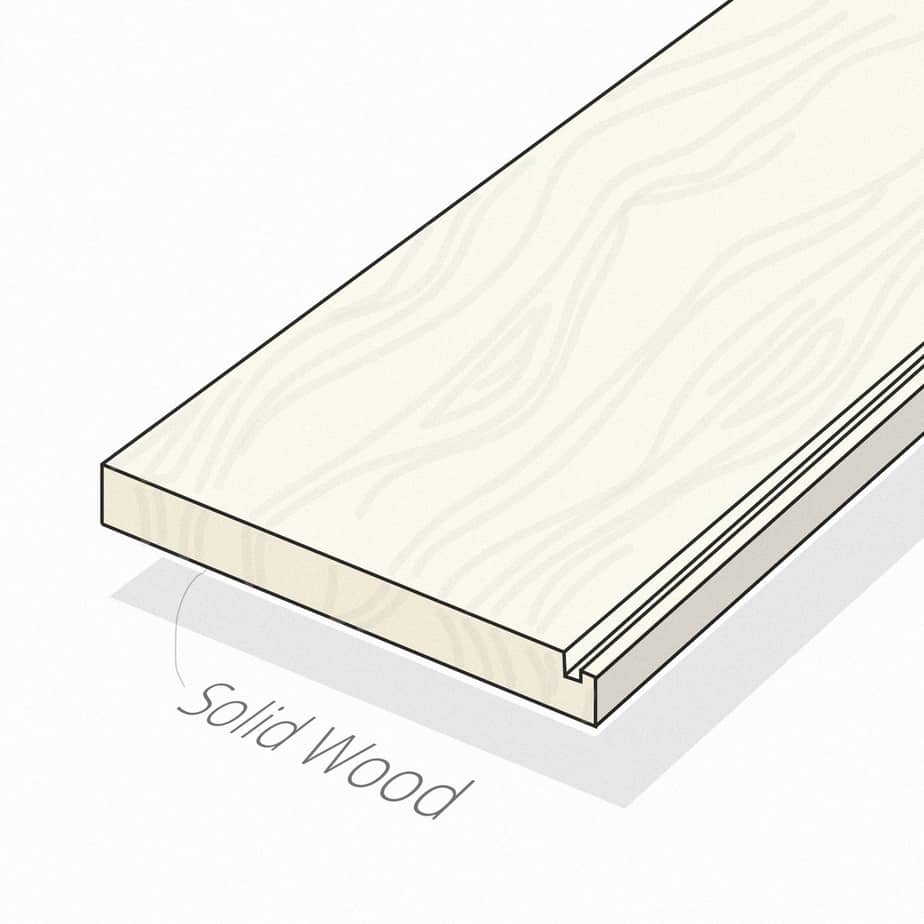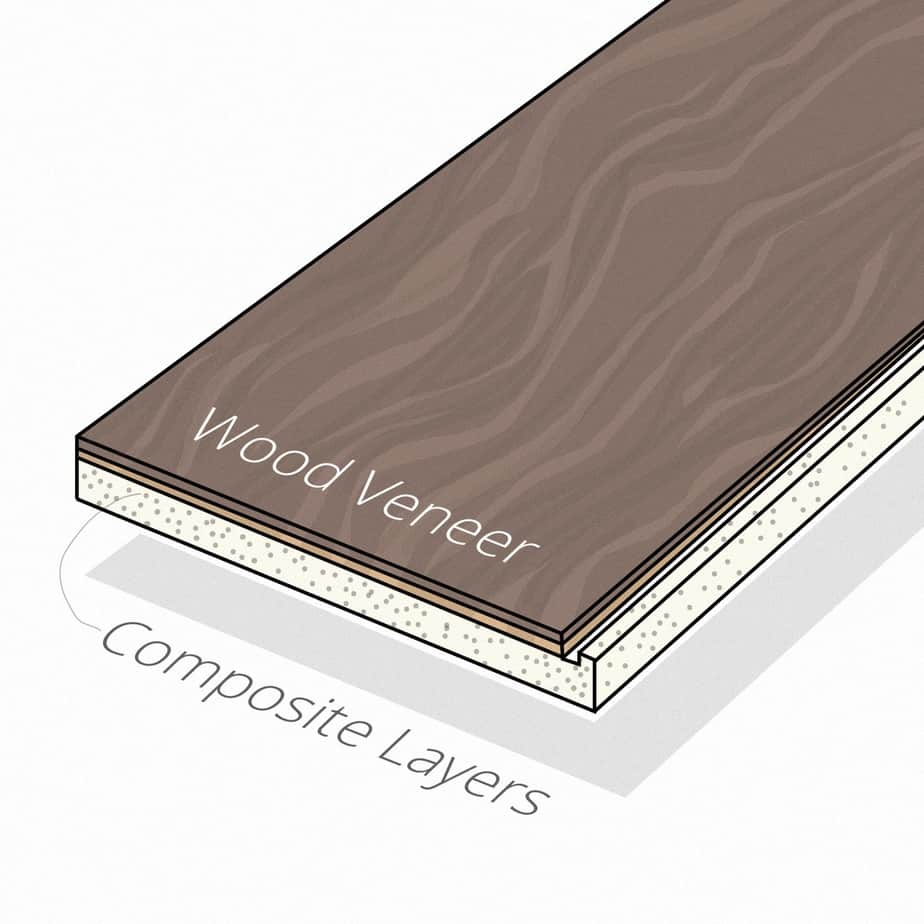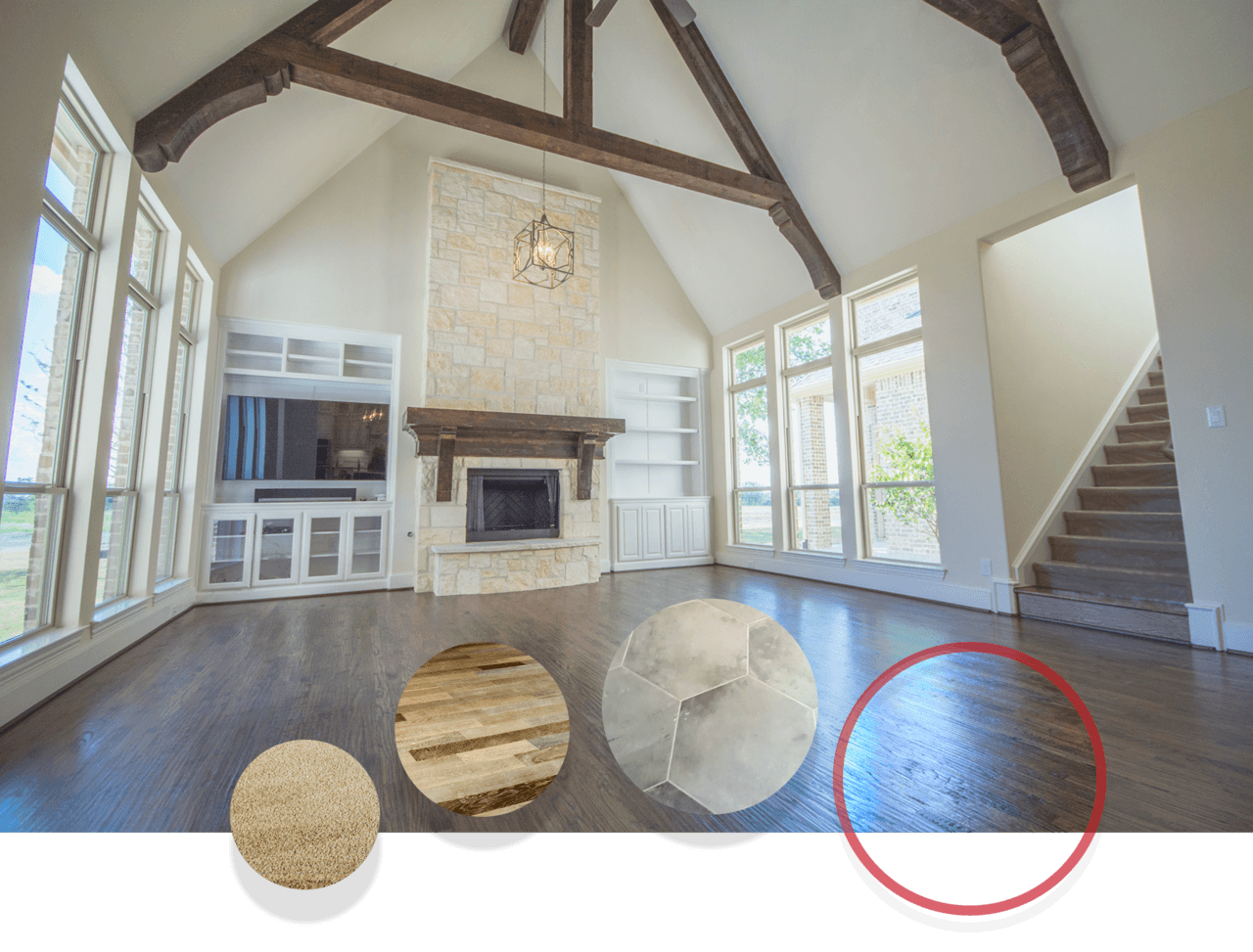Elevate Your Home with Expert Flooring Installation in the Dallas Fort Worth Area.
When choosing a flooring, it's essential to consider your lifestyle, as well as your style preferences. To make sure your flooring holds up through the years, think about how it will be used and how much daily wear-and-tear it will get. Consulting a flooring professional can help you make the best choice for durability and aesthetics.
If you have a large family with kids and pets, your flooring style choice may be different than if you live alone.
With an active family and pets in the house, your flooring will take a lot of abuse on a daily basis. You'll have more dirt, grime and scuff marks, as well as more cleaning and maintenance requirements.
Flooring: Selecting Your Materials
Choosing the right flooring is crucial, as it deeply influences both your home's functionality and aesthetic appeal. Your lifestyle and personal style preferences should guide your decision-making process.
If your household has young children and pets, opting for more durable flooring materials is likely necessary to withstand daily wear and tear.
High-traffic areas in your home will endure more dirt, stains, and scuff marks over time, necessitating flooring that can handle such challenges.
Additional cleaning and maintenance may also be required depending on your choices.
Consider Your Lifestyle
When choosing a flooring, it's essential to consider your lifestyle, as well as your style preferences. To make sure your flooring holds up through the years, think about how it will be used and how much daily wear-and-tear it will get. If you have a large family with kids and pets, your flooring choice may be different than if you live alone. With an active family and pets in the house, your flooring will take a lot of abuse on a daily basis. You'll have more dirt, grime and scuff marks, as well as more cleaning and maintenance requirements.
The flooring you put in your living room or bedroom may have different requirements than the flooring you put in your kitchen, a high traffic area prone to moisture and spills. Before you select a flooring material, ask yourself these important questions:
High quality flooring that fits your lifestyle needs will last longer, require less maintenance, and protect your financial investment. It will also enhance the beauty of your home and interior design style by looking its best for many years.
Wood Flooring
C
lassic hardwood flooring is available in a wide variety of styles, colors, patterns and finishes. It comes in planks, strips and tiles, and each natural wood species offers a different hardness, grain and color variation that provides unique visual interest. Whether you prefer the lighter shades of oak, maple and bamboo or the deeper shades of walnut and mahogany, beautiful hardwood flooring will add warmth and character to any interior.
There are many advantages to hardwood flooring, including its durability, timeless appeal, and ability to increase home value.
Light vs. Dark
The light, warm tones of oak, maple, teak and bamboo work well in modern or contemporary interiors. They provide a warm, casual setting that reflects light and creates an open, airy feeling enhanced by bold, bright colors. Darker tones of walnut, mahogany and cherry work well in more traditional interiors. They create a more formal setting that's enhanced by deep, rich color schemes.
What's the Difference? Solid vs. Engineered

Solid Wood Floors
Durable hardwood flooring is crafted from a solid piece of wood, offering both longevity and timeless beauty. While it is an investment, its durability ensures that it will last a lifetime with proper care and maintenance. Thanks to its thickness, beautiful wood floors made from solid hardwood can be sanded and refinished multiple times without causing damage.

Engineered Wood Floors
Engineered wood flooring is manufactured from real hardwood, but contains several layers of different wood veneers. The top layer, made from a high-quality wood, gives the finished appearance. It's durable, easy to maintain, and cost less than solid hardwood, but due to thin veneers it can not be sanded and refinished like solid wood floors.
Carpet
Carpet floors and area rugs are available in endless styles, patterns, textures and colors. They come in wool, nylon, acrylic, polyester and combination fibers with plush, textured and cut piles. With stain-guard technology, carpets offer a durable, easy-to-maintain flooring choice for any interior style. Carpets and rugs provide warmth, softness, texture, visual interest and sound absorption for your home's interior. During the winter, they can even reduce energy costs by providing added warmth and insulation.
Carpet flooring is a great choice for bedrooms, because it provides softness and warmth underfoot and helps to dampen sound for a better night's sleep. You can choose from a variety of beautiful carpet colors, thick, plush piles, stylish Berbers, cut and loop textures, or flat weaves that offer a commercial look.
When selecting carpeting for your home, pay attention to:
Tile & Stone
Ceramic or porcelain tiles and natural stones offer easy maintenance. They are great for kitchens and bathrooms and other areas that are exposed to heavy traffic, water, spills and stains. Available in a wide variety of sizes, shapes, textures and colors, it’s easy to choose a floor that enhances any interior style.
Tile Types
Ceramic Tile. Ceramic tiles are made from white clay or red clay, with a baked decorative glaze on the surface of the tile. Surface glazes have hardness ratings that range from one to five, with five being the hardest. The glaze on ceramic tiles acts as a protective sealant, but grout should be sealed for durability and easier cleaning. Choosing the right selection of flooring material ensures a long-lasting and stylish result.
Porcelain Tile. Made from a stronger, denser material than clay and baked at higher temperatures, porcelain tiles are an excellent quality product for high-traffic areas. Though they resemble ceramic tiles, they are more resistant to chipping and cracking. Porcelain tiles can be laid with thinner grout lines or even no grout at all, resulting in a perfect installation that enhances any space.
Natural Stone. Natural stones like granite, marble, limestone, travertine, and slate offer strength and durability. They come in a wide range of sizes and colors from white to black. Polished stones have a sheen that provides an elegant appearance, while tumbled stones and honed finishes have a rougher texture that looks more natural. Since natural stone is porous, it should be sealed annually to prevent stains and moisture damage. No matter the type of floor you choose, proper installation and maintenance will maximize its longevity and appeal.
Eco-Friendly Flooring
Bamboo. Unlike hardwood flooring, bamboo flooring is made from a lightweight, woody grass rather than a tree. Most bamboo used for flooring is grown in controlled forests, so it reaches maturity in just three to five years, compared to hardwood trees that often take over 100 years to grow to full size. Bamboo has the tension strength of steel and is not supposed to expand or shrink with humidity changes, however, it does not always held up to Texas weather.
Cork. Like bamboo, cork is an eco-friendly flooring alternative. Cork has resilient properties which provide a comfortable, cushion under your feet, as well as great sound absorbency and noise reduction. Cork flooring tiles have a natural, non-slip surface, so they are ideal for wet areas like kitchens and bathrooms. Since cork is a porous material, it should be sealed for protection against stains.
Linoleum. Linoleum is considered eco-friendly because it's made from all natural materials like linseed oil, rosins and wood flour. It has natural anti-bacterial properties which stop microorganisms from multiplying, so you often see natural linoleum floors in hospitals. In addition to natural health benefits, linoleum flooring is anti-static, water and scratch resistant, easy to clean, and resilient under your feet. Available in a variety of patterns and colors, linoleum is a great flooring choice for kitchens, bathrooms and family rooms that get a lot of traffic.
Our Service Areas.
DFW Improved is your trusted partner for kitchen remodeling services in North Texas. With a strong presence in local communities like Plano, Frisco, Allen, Prosper, Celina, McKinney, Dallas-Fort Worth, and surrounding areas, we have become a staple in enhancing the beauty and functionality of kitchens in these regions. Our commitment to excellence shines through in every project, as we transform kitchens into luxurious and functional spaces that homeowners in these communities can be proud of. DFW Improved is here to cater to your specific needs. Contact North Dallas' leading kitchen remodeler to embark on a kitchen remodeling journey that will elevate your home's heart and soul.
Imagine Your Flooring Improved.
Ready for your very own DFW Improved experience?
Schedule a visit to showroom today or contact us for an estimate for your home's new floors!
Frequently Asked Questions
Got questions about flooring? You're in the right place! Explore common questions to find helpful tips for your flooring project.

